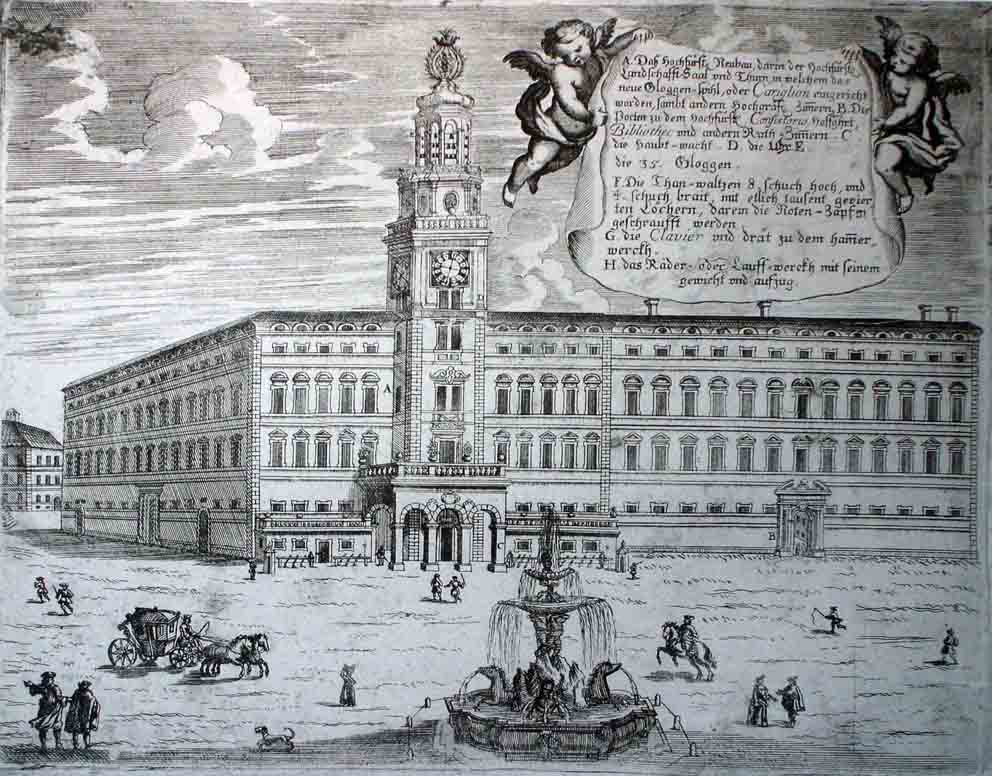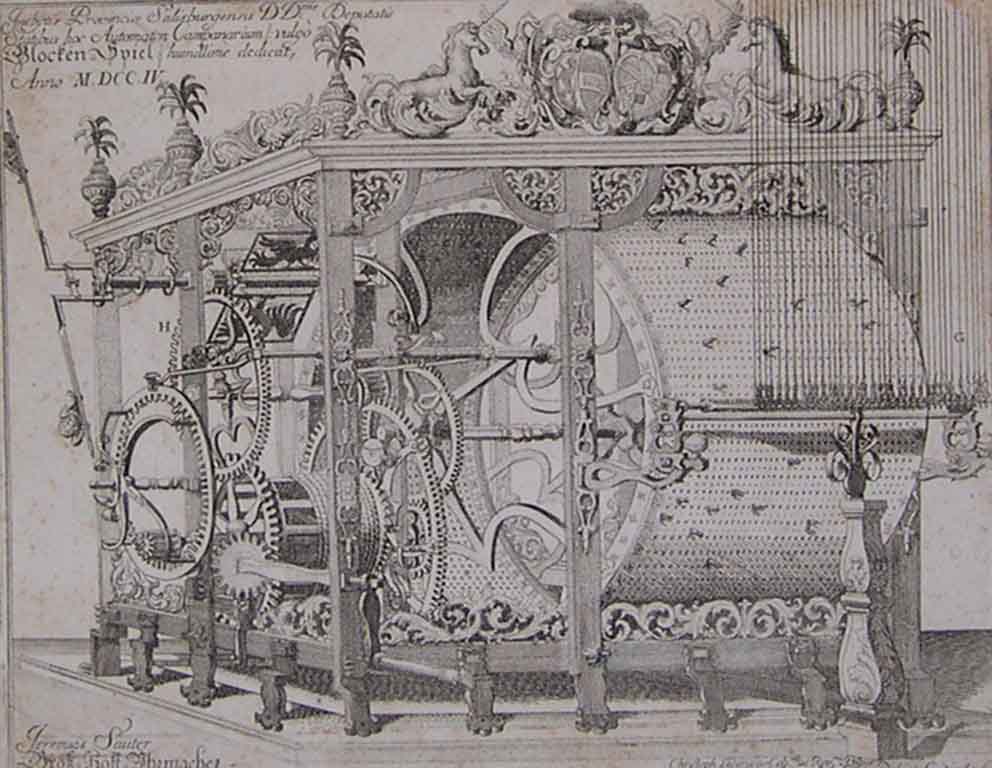SALZBURGER GLOCKENSPIEL
MOZARTPLATZ 1
5010 SALZBURG
T +43-662-62 08 08-722
E office@salzburgmuseum.at
PLAYING HOURS
daily at 7, 11 und 18
CURRENT MELODY
Erentrudislied
Text: Sr. Miriam Eisl OS, Melodie: Sr. Emmanuel Ingruber OSB
Salzburg, Stift Nonnberg 2018
GUIDED TOURS
End of March to October:
Thursday 17.30 German
Friday 10.30 German
Thursday 16.30 English
Booking necessary
Individual guided tours can be booked on request all year round (depending on weather conditions with or without a visit to the platform)
TICKETS
at the ticket office
Neue Residenz
Adults: € 4,50
Young People (aged 6 to 15): € 3,-
Children: € 3
Groups: € 80,-
THE HISTORY OF THE SALZBURG CARILLON
In the late seventeenth century, Archbishop Count Johann Ernst Thun (1687-1709) ordered the raising of the tower built by Archbishop Wolf Dietrich von Raitenau (1587–1612) on the west side of the “palazzo nuovo” (today's Neue Residenz) to make room for a carillon. A copper engraving by Christoph Lederwasch dated 1704 shows that at the time the guard station was housed in a front building on the ground floor. The arcades (above the Heimatwerk) connected to the south of the tower were only added in 1860.
Archbishop Thun had purchased the 35 bells from the bell caster Melchior de Haze in Antwerp and had them brought overland to Salzburg via Frankfurt, Altmühltal and Altötting. The search began here for suitable professionals to construct the carillon. In 1698, the Salzburg master clockmaker Jeremias Sauter went on an information trip to the Netherlands to study carillon technique. After the tower had been raised to its full height in 1702, the Salzburg stucco caster Franz Sulzer and the bell caster Benedikt Eisenberger, supervised by Sauter, began construction work on the drive mechanism. A weight suspended from a cord roll and transmitted by multiple gear wheels moves the axis of a brass cylinder measuring about 2.5 metres in diameter. Sauter drilled, cut and filed 7,970 holes into the brass plates. A pin can be inserted into each hole, which releases the bell chime via a complicated mechanism of wooden and metal rods, as well as cords and a hammer system with springs. Each bell (apart from the four lowest bass bells) has two hammers of the same size in order to let the same tone sound twice, one immediately after the other. It is most astonishing that these craftsmen, without any relevant experience, managed at that time to assemble and make such a complex apparatus, which functions basically unchanged to this day.
The final completion of the carillon dragged on for some years, since Sauter kept adding improvements. This meant that the carillon first resounded at the end of 1703. Archbishop Thun donated another 4,000 guilders in 1702 and with this money appointed the Salzburg Land Diet (then called Landschaft) to operate the carillon. Usually it was the duty of the apprentices and journeymen of the court clockmaker to crank the weights up three times a day, manually setting the carillon into motion.
Melchior de Haze (1632–1697)
De Haze was a renowned bell caster in Antwerp and was appointed deputy “mint master“ or monetarius there in 1685. Other achievements of his include the great bell for the pilgrimage church in Scherpenheuvel in1654, the carillon for the Spanish Escorial in 1674, for Bruges in 1675 (destroyed in a fire in 1741), for the tower of St James in The Hague in 1686, for the church in Alkmaar in 1689 and for Salzburg in 1695.
Jeremias Sauter (1650–1709)
Sauter, who held the title of “Gross- und Klein-, Hof- und Landuhrmachermeister” (Clockmaker of Large and Small Clocks to the Court and Land), produced many turret clocks in Salzburg: the cathedral clock and that of Maria Plain in 1683, furthermore the turret clocks for Köstendorf (1690), Faistenau (1684), Berndorf (1687) and Anthering (1693). He owned a house on Mönchsberg 6, to the right on the road to the Schartentor. The stone in the garden wall has the following inscription, translated: “God be with us. Anno 1696 in the month of February, I, Jeremias Saudter, Royal Salzburg Clockmaker of Small and Large Clocks to the Court and Land, purchased this house and renovated it etc.” Sauter died on 11 November 1709 and is buried in St Peter’s Cemetery.







![Map from the Salzburger Landesarchiv „Gloggen=Spiel Thurm am Neubau in Salzburg“ (Carillon tower in Salzburg under construction), signed and dated: „Franz v: Paula, 28 August 1817”, SLA, Kreising. Fasz. 272 [JS 47/48, S. 165.]](/fileadmin/_migrated/pics/Glockenspielturm1817.jpg)
